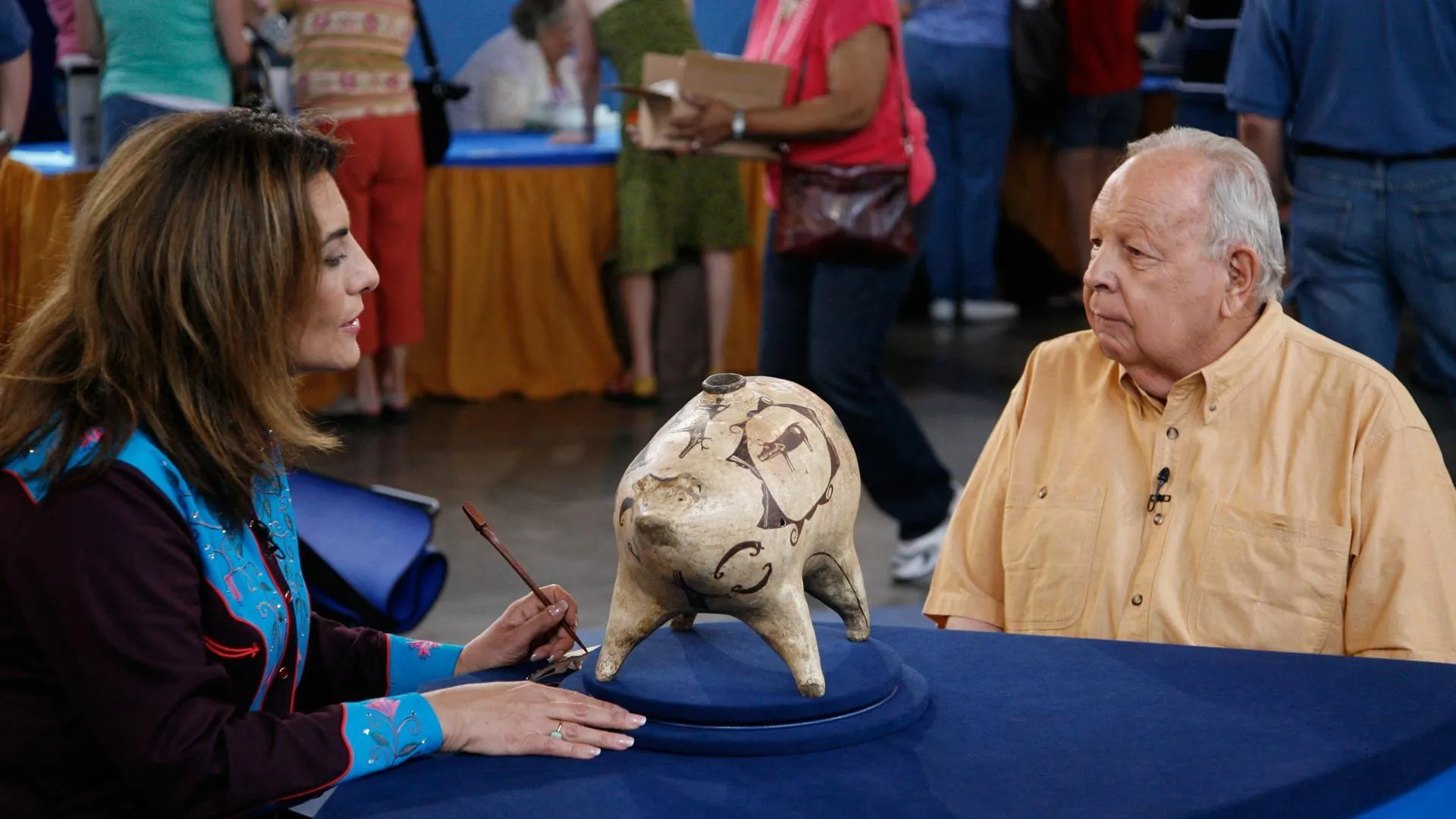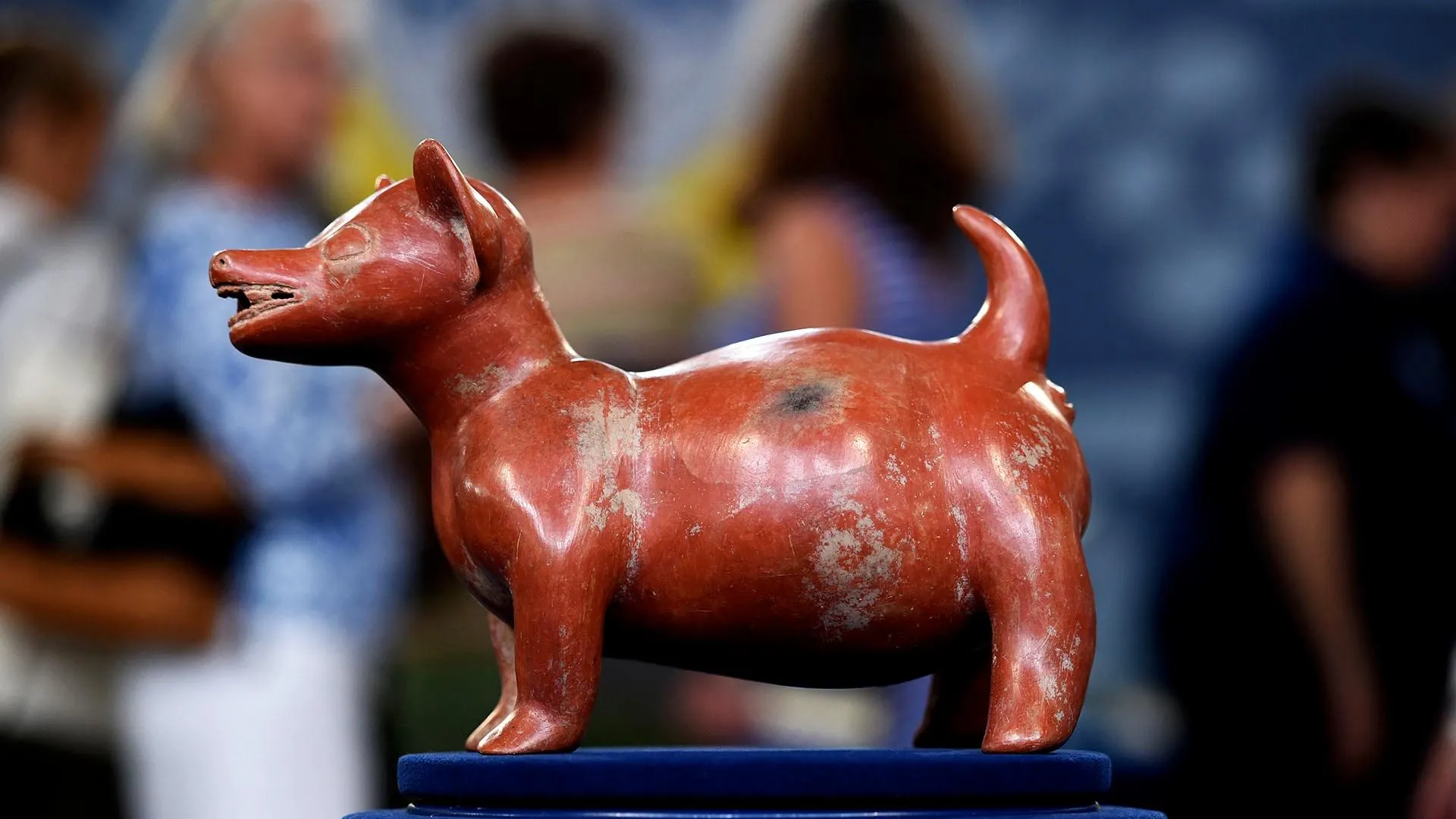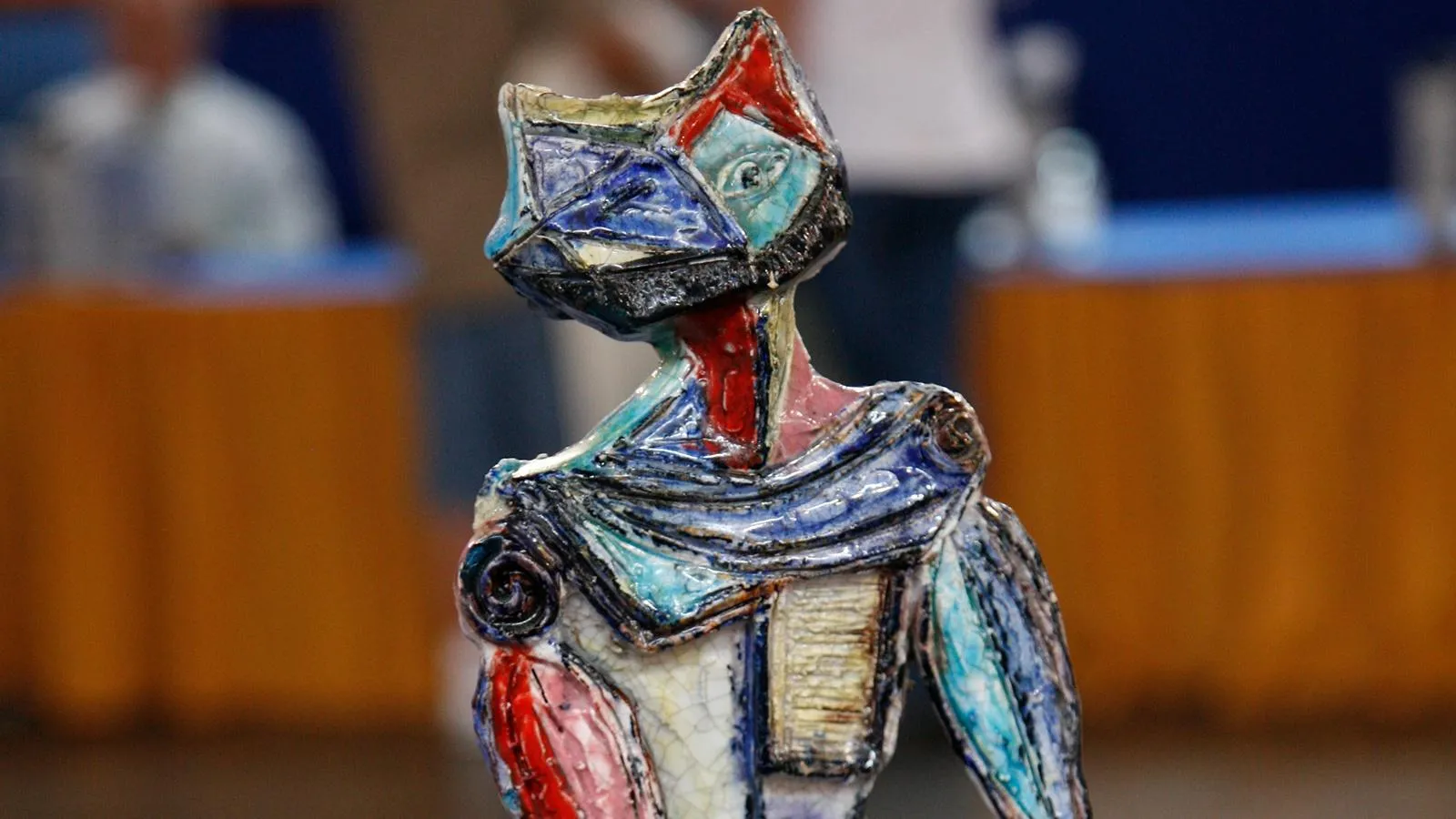GUEST: It my was mother-in-law's, and it was given to her by her family, who had got it in about 1870s. And the Indian who gave it to them said that it was in her family for 75 years. Now, I don't know, that's… That's, that's a story that...
APPRAISER: And where was this person living at the time they received it?
GUEST: They had a trading post at Isleta Pueblo in New Mexico.
APPRAISER: The Isleta Pueblo is sort of the central pueblo of the Rio Grande region.
GUEST: Yeah, yes.
APPRAISER: "Isleta" stands for "Little Island."
GUEST: "Little Island."
APPRAISER: Well, what you've brought to us today is really quite extraordinary. We've never collectively seen one in this format before. The Isletas, during the Pueblo Revolt of the late 1600s, actually fled to the safety of the Hopis. And when they came back to repopulate their village, they brought their Hopi spouses with them. And then, in the mid-1800s, a few people from Laguna Pueblo and a few Natives of the Acoma Pueblo moved in there. So, your pot kind of reflects the diversity of all the different tribal attributions, because it's not a clear case of who made this, and this pot represents a time period of probably the 1860s to 1880s. Now, it's a canteen. It's a wonderful pig. There would have been a stopper in there, which, of course, would not have been a cork, but a corn cob.
GUEST: Yeah.
APPRAISER: And it has the assets of the Rio Grande Pueblo in terms of the clay. It has a finish that we refer to as a slip glaze. And it also has these deer on there, which people like to attribute to the Zuni, with these heart line...
GUEST: Yeah.
APPRAISER: ...indications in them. But I actually feel that there might have been a Hopi hand involved in this.
GUEST: They think so.
APPRAISER: So it was a collaborative influence. Have you ever tried to establish a price on it?
GUEST: A friend of mine who collected Indian stuff and sold it gave me a price of, he thought it was about $20,000.
APPRAISER: Well, an easy auction estimate for this piece would be $25,000 to $35,000.
GUEST: Is that right?
APPRAISER: It is quite extraordinary. Just form and function and the figural aspect of it. He's a very striking canteen.










